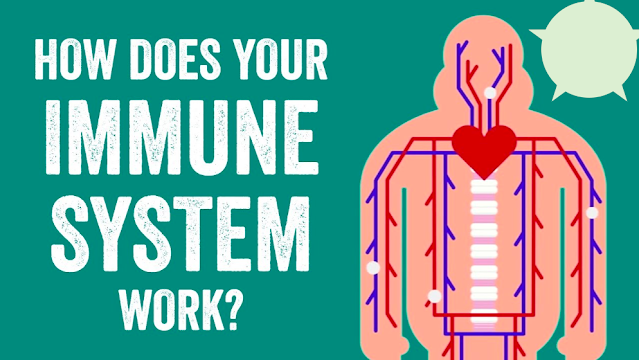As soon as a mosquito touches down on your arm, it injects its venom into your skin and starts to eat. If not for the red lump that emerges and the characteristic itch, you wouldn’t even know it was there. Although it is uncomfortable, that bump is a crucial indicator that your immune system, the body’s main defence against illness, infection, and disease, is working properly. The defences of your body against any dangers to your health are coordinated by this system, which is a large network of cells, tissues, and organs. Without it, you’d be exposed to countless numbers of bacteria, viruses, and poisons that might fatally affect you from anything as simple as a paper cut or a common cold.
Millions of protective white blood cells, or leukocytes, which are produced in our bone marrow are essential to the immune system. These cells move into the lymphatic system, a system of tubes that aids in the removal of waste and poisons from the body, as well as the bloodstream. Every microliter of blood contains between 4,000 and 11,000 leukocytes, which are abundant in our bodies. Leukocytes travel around like security guards, continually scanning the blood, tissues, and organs for irregularities. Antigens are the primary cues on which this system depends. These molecular footprints reveal the presence of invaders on the surface of infections and other foreign substances. It just takes a few minutes for the body’s defending immunological reaction to begin once the leukocytes recognise them.
Because the threats to our bodies are so diverse, the immune response must also be flexible. This necessitates the use of a wide variety of leukocyte subtypes to respond to challenges in various ways. Despite this variety, we divide leukocytes into two major cellular groups that work together to launch a two-pronged assault. Phagocytes first start the immune response by releasing dendritic cells and macrophages into the circulation. These circulate and instantly consume any foreign cells they come into contact with. This enables the phagocytes to recognise the antigen on the invaders they have just consumed and pass this information to the lymphocytes, the second important cell type in charge of organising the defence. T-cells are a subset of lymphocytes that hunt down contaminated bodily cells and quickly eliminate them.
B-cells and helper T-cells begin manufacturing the specialised proteins known as antibodies while using the data gathered from the particular antigens. Each antigen has a specific, complementary antibody that may bind to it like a lock and key and obliterate the invader cells. Millions of these can be produced by B-cells, which circulate through the body and fight the invaders until the greatest threat has been eliminated. While all of this is happening, common symptoms like high temperatures and edoema are actually immune-supportive processes. Because bacteria and viruses are temperature-sensitive, a warmer body makes it more difficult for them to grow and propagate. Additionally, when bodily cells are harmed, chemicals are released that cause fluid to flow into the nearby tissues, resulting in swelling. This draws phagocytes as well, which eat the intruders and the injured cells.
An immune reaction often eliminates a threat in a matter of days. Even while that isn’t always its goal, it won’t always keep you from getting sick. Its actual function is to prevent an internal threat from growing to dangerous proportions. Additionally, the immune system offers us additional advantage over time by assisting in the development of lifelong immunity through continuous monitoring. B- and T-cells can use the knowledge they learn about antigens to recognise future invaders. As a result, when a threat reappears, the cells can quickly mobilise the appropriate antibodies to combat it before it damages other cells.
You can build an immunity to some illnesses, like chickenpox, in this way. Sometimes it doesn’t work out so nicely. Autoimmune illnesses are conditions that deceive the immune system into targeting the body’s own perfectly healthy cells in some people. These illnesses undermine the immune system to varied degrees and are the root causes of conditions including multiple sclerosis, Type I diabetes, and arthritis. The specific source of these illnesses is unknown. However, for the majority of people, a strong immune system will enable them to effectively combat 300 colds and countless other potential diseases during their lives. If it weren’t for it, the threats would become far more serious. So keep the immune system in mind the next time you have a cold or itch a mosquito bite. To save our life, we must.
Related Searches:
what is immune system, how does the immune system fight viruses, immune system facts, types of immune system, what is immunity, how does the immune system protect the, body from disease, immune system organs, three major functions the immune system.
List of Tags:
immune system, health, biology lesson, staying healthy, immune system, immune system and cancer, immune system attacking eyes, immune system booster foods, immune system cells, immune system compromised, immune system diseases, immune system disorders, immune system function, immune system low, immune system meaning, immune system organs, immune system pregnancy, immune system test, immune system vitamins, immune system booster vitamins, immune system juice recipe, immune system.


